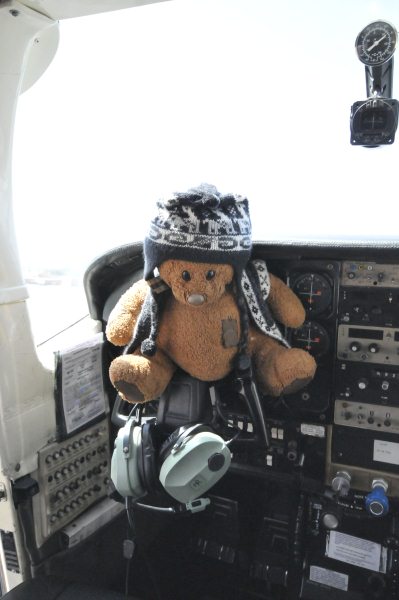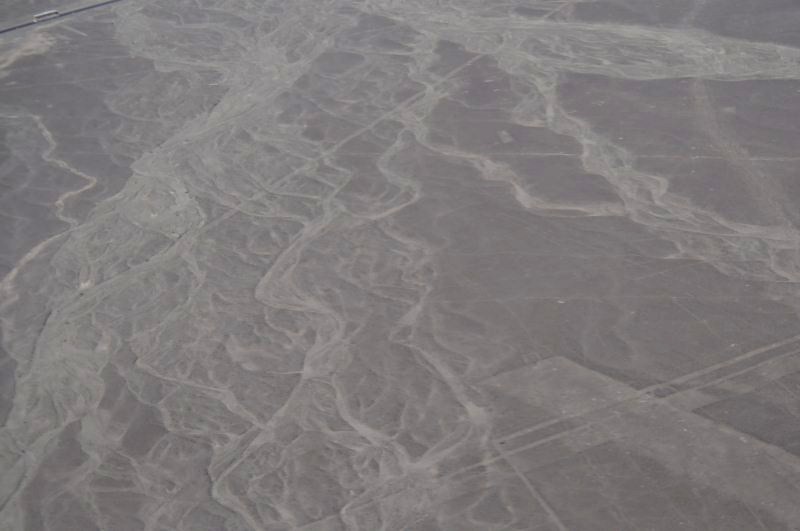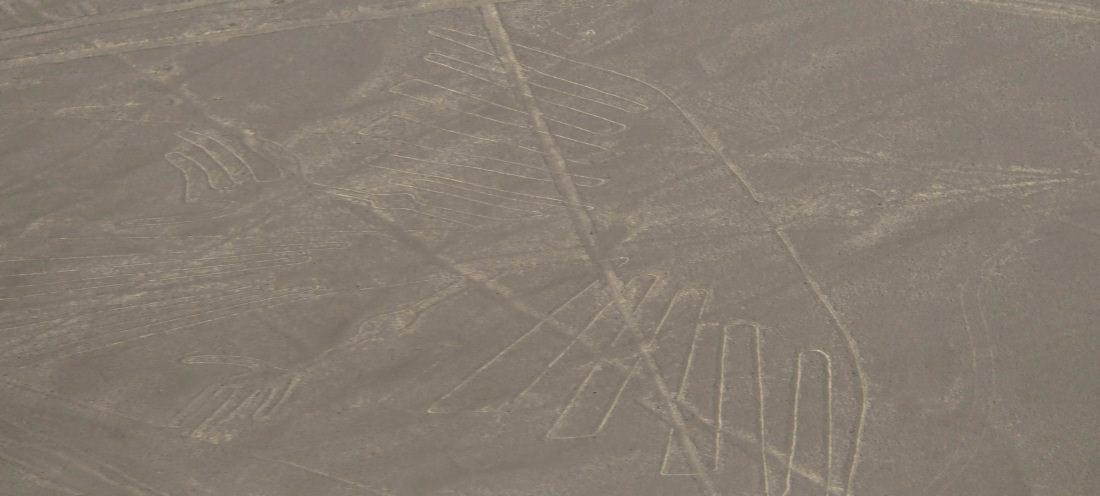Nazca Lines

|
Nazca
Lines
We arrived at the airfield and immediately one of the stallholders fell in love with Beds. We sat with all the other tourists and awaited a pilot. We paid our ten Soles airport tax and passed through security. Time for Beds to have a pre-flight cuddle with Anne. The Nazca Lines are a series of ancient geoglyphs located in the Nazca Desert of Peru. They have been designated a UNESCO World Heritage Site. The high, arid plateau stretches more than fifty miles between the towns of Nazca and Palpa on the Pampas de Jumana. Although some local geoglyphs resemble Paracas motifs, scholars believe the Nazca Lines were created by the Nazca culture between 200 BC and 700 AD The hundreds of individual figures range in complexity from simple lines to a stylised hummingbird, spider, monkey, orca and many others.

We were called by Carlos at two o'clock for our half an hour flight. The planes now have two pilots as one had a heart attack, killing six tourists not that long ago. The happy gang looking so big compared to the seemingly tiny plane.
The lines are shallow designs made in the ground by removing the ubiquitous reddish pebbles and uncovering the whitish ground beneath. Hundreds are simple lines or geometric shapes; more than seventy are designs of animal, bird, fish or human figures. The largest figure is nearly eight hundred and ninety feet long. Scholars differ in interpreting the purpose of the designs, but they generally ascribe religious significance to them, as they were major works that required a vision, planning and coordination of people to achieve. The geometric ones could indicate the flow of water or be connected to rituals to summon water. The spiders, birds and plants could be fertility symbols. Other possible explanations include: irrigation schemes or giant astronomical calendars. Due to the dry, windless and stable climate of the plateau and its isolation, for the most part the lines have been preserved. Extremely rare changes in weather may temporarily alter the general designs.
 
Beds had a go at the controls, then settled with Bear for the interesting flight, more like a ride on a roller coaster - challenging to photograph. Construction: Scholars have theorised the Nazca people could have used simple tools and surveying equipment to construct the lines. Studies have found wooden stakes in the ground at the end of some lines, which support this theory. One such stake was carbon-dated and the basis for establishing the age of the design complex. Researcher Joe Nickell of the University of Kentucky has reproduced the figures by using tools and technology available to the Nazca people and which National Geographic referred to as 'remarkable in its exactness' when compared to the actual lines. With careful planning and simple technologies, a small team of people could recreate even the largest figures within days, without any aerial assistance.

When we first looked down it was hard to make out the shapes - until the Captain pointed them out - then it became easier. He patiently kept circling at the beginning making sure we got the shots.
When the gravel is removed, the light-colored earth beneath shows in lines of sharply contrasting colour and tone. The Nazca drew several hundred simple curvilinear animal and human figures by this technique. In total, the earthwork project is huge and complex: the area encompassing the lines is nearly one hundred and ninety square miles miles and best seen from the air. The extremely dry, windless and constant climate of the Nazca region has preserved the lines well. The Nazca desert is one of the driest on Earth and maintains a temperature around twenty five degrees Centigrade all year round. The lack of wind has helped keep the lines uncovered and visible to the present day.
 
It was easy to pick out this huge shape but we had to have the Astronaut pointed out, this was our first figure - one of the ones the Captain circled for us

Our favourite - the Condor
ALL IN ALL A WONDER AND GREAT MYSTERY |

